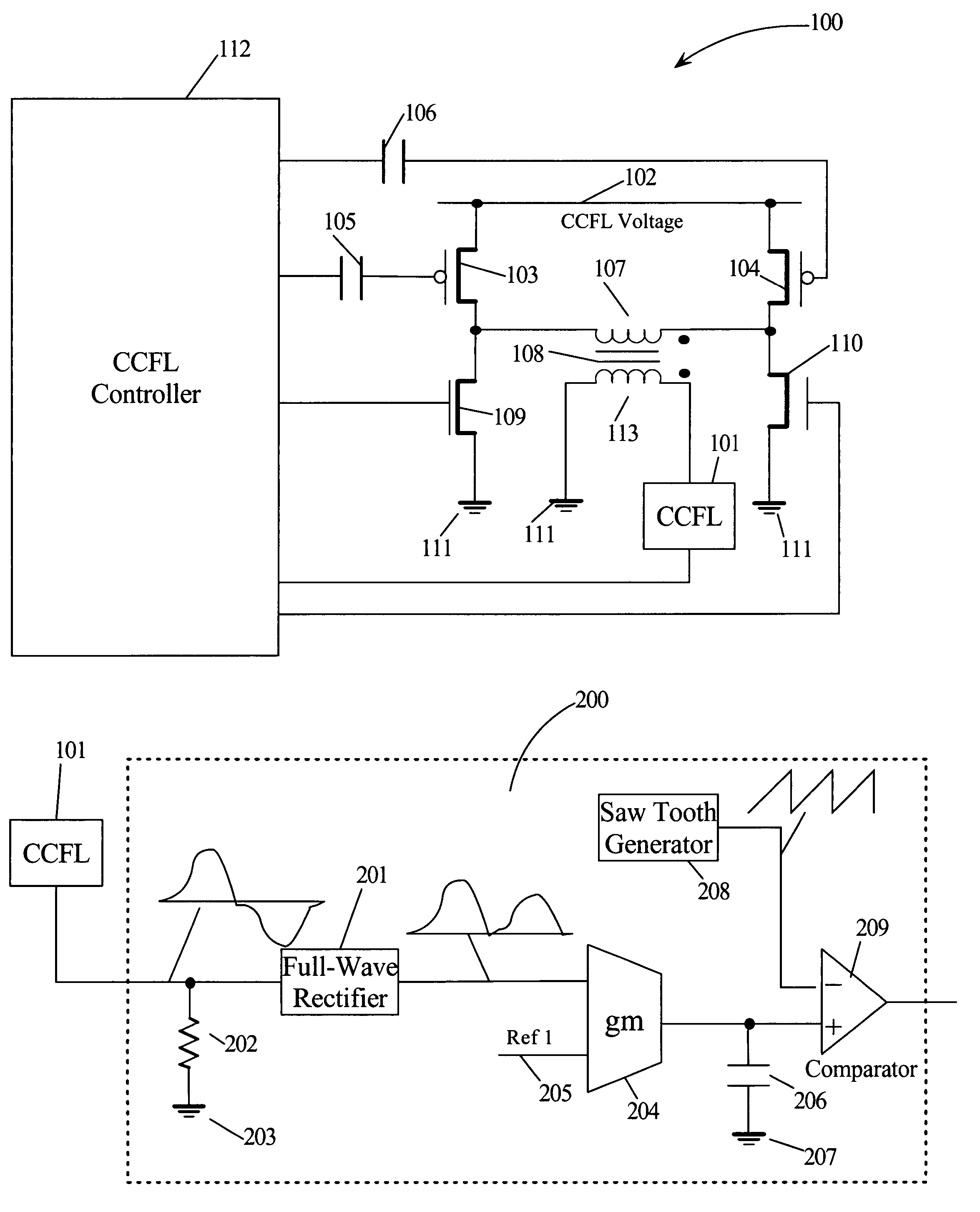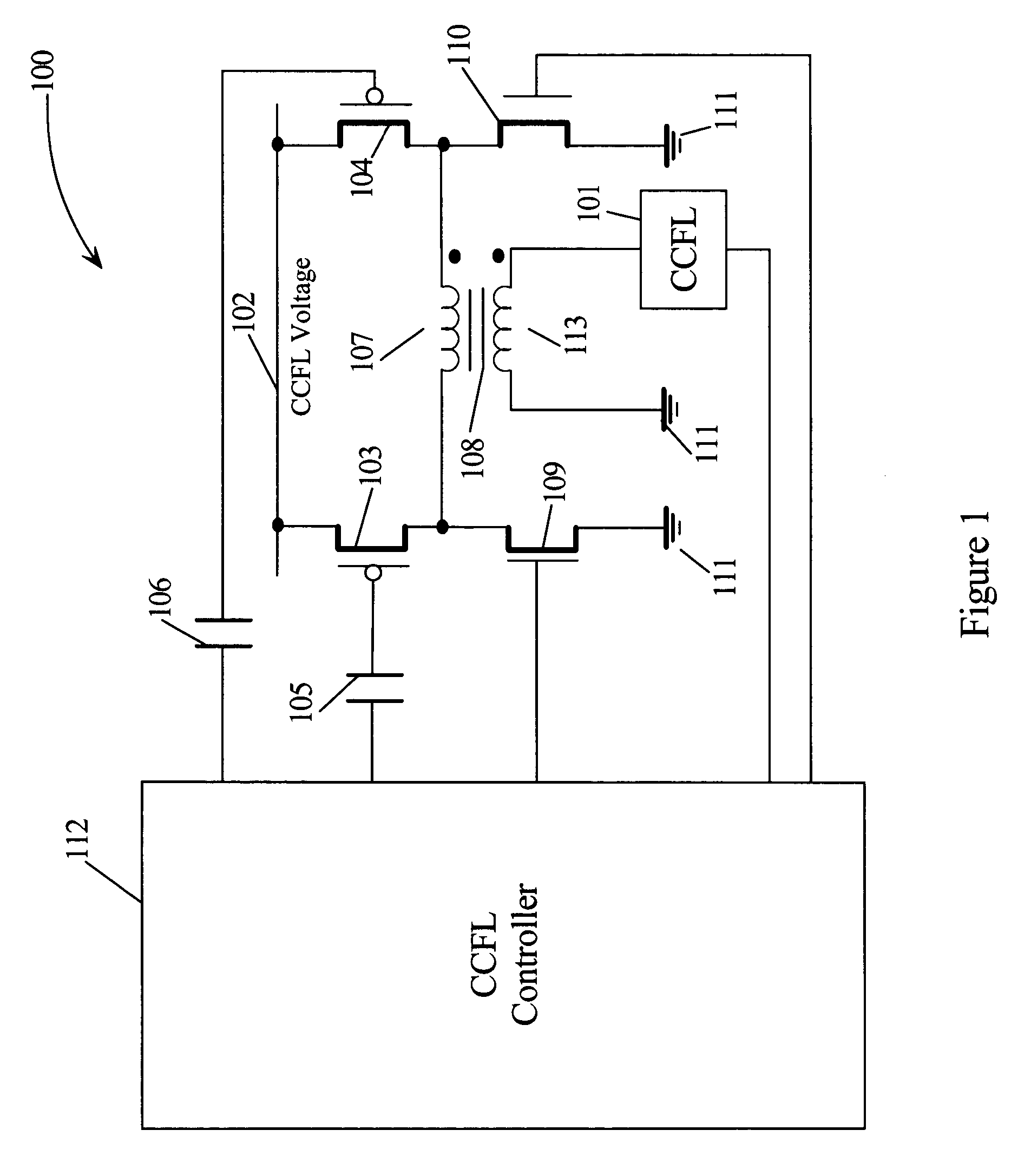Protecting a cold cathode fluorescent lamp from a large transient current when voltage supply transitions from a low to a high voltage
a cold cathode fluorescent lamp and transient current technology, applied in the field of fluorescent lamps, can solve the problems of shortening shortening the life of the ccfl, and limited power required to generate light, so as to reduce the duration of current flowing through the ccfl and reduce the lifetime of the ccfl. , the effect of the duty cycl
- Summary
- Abstract
- Description
- Claims
- Application Information
AI Technical Summary
Benefits of technology
Problems solved by technology
Method used
Image
Examples
Embodiment Construction
[0019]The present invention comprises a circuit and a compensation circuit for protecting a lamp from a large transient current. In one embodiment of the present invention, a compensation circuit may comprise a saw tooth generator configured to generate a saw tooth signal with an amplitude corresponding to a supply voltage of the lamp. The compensation circuit may further comprise an amplifier configured to generate a Direct Current (DC) baseline signal. The compensation circuit may further comprise a comparator coupled to the saw tooth generator and the amplifier where the comparator outputs a pulse width modulated signal based on the saw tooth signal and the DC baseline signal. A duty cycle of the pulse width modulated signal is a function of the amplitude of the saw tooth signal. When the supply voltage of the lamp transitions from a low voltage to a high voltage, the amplitude of the saw tooth signal correspondingly increases. When the amplitude of the saw tooth signal increases...
PUM
 Login to View More
Login to View More Abstract
Description
Claims
Application Information
 Login to View More
Login to View More - R&D
- Intellectual Property
- Life Sciences
- Materials
- Tech Scout
- Unparalleled Data Quality
- Higher Quality Content
- 60% Fewer Hallucinations
Browse by: Latest US Patents, China's latest patents, Technical Efficacy Thesaurus, Application Domain, Technology Topic, Popular Technical Reports.
© 2025 PatSnap. All rights reserved.Legal|Privacy policy|Modern Slavery Act Transparency Statement|Sitemap|About US| Contact US: help@patsnap.com



